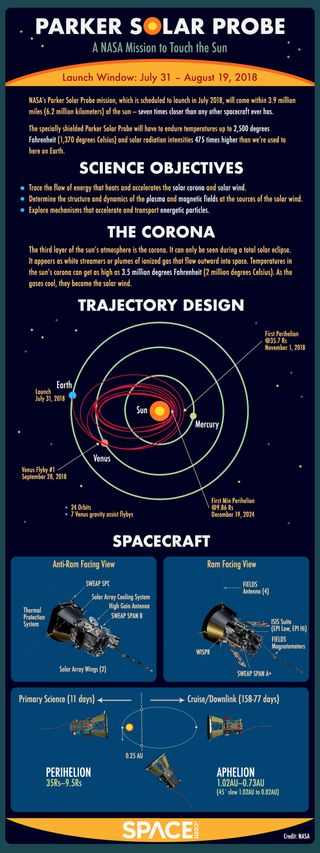NASA's Parker Solar Probe Mission to the Sun Explained (Infographic)

NASA's Parker Solar Probe mission, which is scheduled to launch in July 2018, will come within 3.9 million miles (6.2 million kilometers) of the sun — seven times closer than any other spacecraft ever has.
The specially shielded Parker Solar Probe will have to endure temperatures up to 2,500 degrees Fahrenheit (1,370 degrees Celsius) and solar radiation intensities 475 times higher than we're used to here on Earth.
If all goes according to plan, the Parker Solar Probe will zoom close to the sun 24 times between 2018 and 2025, gathering a variety of data about the sun's structure and magnetic and electric fields, as well as the energetic particles cruising near and away from Earth's star. This information could help researchers solve two longstanding mysteries: How the solar wind is accelerated and why the sun's outer atmosphere, or corona, is so much hotter than the solar surface, NASA officials have said.
Follow us @Spacedotcom and Facebook.
Join our Space Forums to keep talking space on the latest missions, night sky and more! And if you have a news tip, correction or comment, let us know at: community@space.com.
Get the Space.com Newsletter
Breaking space news, the latest updates on rocket launches, skywatching events and more!
